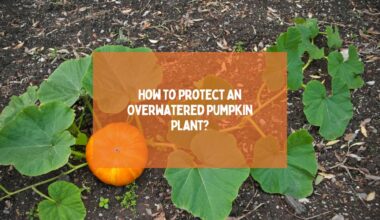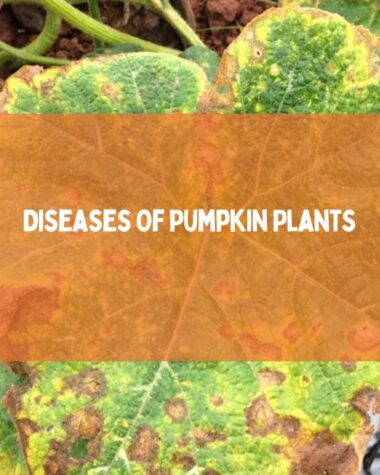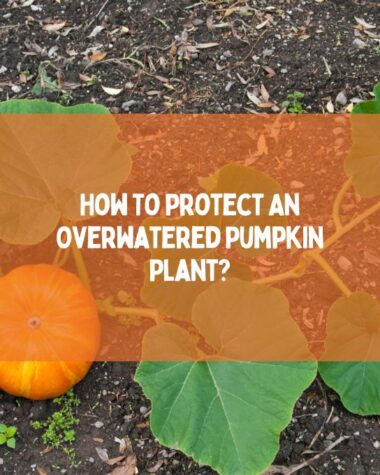Many things can cause pumpkin leaves to turn yellow, such as environmental stress, a lack of nutrients, chemical damage, and insect infestations. When a plant’s leaves turn yellow, it means that it is in trouble, and this can make the plant much less productive.
If you are a gardener and love growing plants, you will know that, just like any other plant, growing pumpkins is not an easy task. Growing a pumpkin plant is associated with its own set of hardships, from preventing diseases to leaves turning yellow and brown to deterring pests and overwatering.
Identifying the underlying cause and taking appropriate measures will help the plant thrive and prevent it from being damaged.
In this article, we are going to understand why pumpkin leaves turn yellow and their treatments. Let’s start.
8 Reasons Why Pumpkin Leaves Turning Yellow
There are a lot of reasons your pumpkin’s leaves are turning yellow. Regular soil testing can help determine which nutrients are lacking and ward off oncoming complications. Additionally, adding organic matter to the soil can help improve soil health and nutrient availability for the plant.
Pumpkin leaves turning yellow and brown can be due to various reasons, including overwatering, underwatering, nutrient deficiencies, pests, and diseases. Following are the 8 reasons why pumpkin leaves turn yellow.
1. Improper Watering
Improper watering, whether overwatering or underwatering, can cause the yellowing of pumpkin plant leaves by affecting the plant’s ability to absorb nutrients and causing stress to the plant.
It is essential to water pumpkin plants properly, providing enough water to keep the soil moist but not waterlogged, to maintain healthy leaves and overall plant growth. Here are some steps you can take to fix improper watering and prevent further yellowing:
- Check the soil moisture: Before watering your pumpkin plant, check the soil moisture. Insert your finger into the soil up to your second knuckle. If the soil feels dry at that depth, it’s time to water.
- Water deeply and infrequently:This means giving the plant enough water to penetrate the soil deeply, but allowing the soil to dry out somewhat before watering again. This will help prevent overwatering and root rot.
- Use a watering can or drip irrigation: Use a watering can or drip irrigation system to deliver water directly to the soil around the pumpkin plant. Avoid getting the leaves wet, as this can encourage fungal diseases.
- Mulch the soil: Mulch the soil around the pumpkin plant with a layer of organic matter, such as straw or shredded leaves. This will retain moisture in the soil and block evaporation.
2. Soil pH
Pumpkin plants prefer a slightly acidic to neutral soil pH range of 6.0 to 7.0. If the soil pH is too low (acidic), the plant may not be able to absorb nutrients properly, which can cause the yellowing of leaves and other problems.
On the other hand, if the soil pH is too high (alkaline), the plant may also not be able to absorb nutrients properly, which can lead to the buildup of toxic substances such as aluminum and manganese that might cause the yellowing of leaves.
Prevention
To obstruct the yellowing of pumpkin leaves due to soil pH problems, it’s important to test the soil pH regularly and adjust it as needed. If the soil pH is too low, you can add lime to raise it. If the soil pH is too high, you can add sulfur or other acidic amendments to lower it.
Related Reading:
3. Environmental Stress
Environmental stress can cause the yellowing of pumpkin leaves due to various factors such as water stress, heat stress, nutrient stress, and pest and disease stress. Yellowing of leaves is a sign that the plant is under stress and not receiving the proper care it needs.
When the plant is exposed to conditions that are not optimal for its growth, such as drought, high temperatures, a lack of nutrients, or pest infestations, it can lead to the leaves turning yellow.
Prevention
By providing the plant with the proper care, including watering, fertilizing, and pest control, you can help deter environmental stress and ensure the health and vibrancy of the pumpkin plant.
4. Nutrient Deficiencies
Several nutritional deficiencies motivate the yellowing of pumpkin leaves, including:
- Nitrogen deficiency: Lack of nitrogen can cause the older leaves of the pumpkin plant to turn yellow. To impede nitrogen deficiency, apply a balanced fertilizer that contains nitrogen, or add organic matter to the soil.
- Phosphorus deficiency: Lack of phosphorus can cause the leaves of the pumpkin plant to turn yellow, with a bluish tint. To halt phosphorus deficiency, apply a balanced fertilizer that contains phosphorus, or add bone meal to the soil.
- Potassium deficiency: Lack of potassium can cause the older leaves of the pumpkin plant to turn yellow at the edges and between the veins. For restraining potassium deficiency, apply a balanced fertilizer that contains potassium, or add potash to the soil.
5. Diseases
There are several pumpkin plant diseases that can cause pumpkin leaves to turn yellow. Here are a few examples:
- Powdery Mildew: This is a fungal disease that can cause yellowing of pumpkin leaves, along with a powdery white coating on the leaves. It thrives in warm and humid conditions, and can spread quickly if left untreated.
- Bacterial Wilt: This disease is caused by a bacteria that can cause yellowing and wilting of pumpkin leaves. It can be spread by cucumber beetles, which can also feed on pumpkin plants.
- Verticillium Wilt: This is a fungal disease that can cause yellowing and wilting of pumpkin leaves, along with stunted growth and reduced yield. It can be spread through infected soil or contaminated tools.
- Cucumber Mosaic Virus: This virus can cause yellowing and distortion of pumpkin leaves, along with reduced yield and stunted growth. It can be spread by aphids or contaminated tools.
If you suspect that your pumpkin plant has a disease, it’s important to take action as soon as possible to prevent the spread of the disease to other plants. Consult a local gardener for advice on how to treat the specific disease affecting your pumpkin plant.
6. Older Plants
Older pumpkin plant leaves can turn yellow due to natural aging or nutrient deficiencies. As pumpkin plants mature, their older leaves may naturally turn yellow and drop off to make room for new growth.
However, if the older leaves are turning yellow prematurely, it could be a sign of a nutrient deficiency.
Prevention
To prevent premature yellowing of older pumpkin plant leaves due to nutrient deficiencies, provide the plant with the proper nutrients through fertilization and maintain proper soil pH.
7. Chemical Damages
Chemical damages such as herbicide damage, fertilizer burn, soil toxicity, and chlorine damage can cause pumpkin leaves to turn yellow.
Prevention
To thwart the chemical damages that cause the yellowing of pumpkin leaves, it’s important to carefully follow the instructions for herbicide, and fertilizers should be applied carefully and not too close to the plant.
Avoid using water sources with high levels of chlorine for irrigation and fertilization, and monitor for soil toxicity. In case of accidental exposure to chemicals, flush the affected area with plenty of clean water promptly.
8. Insects
Insects can turn pumpkin leaves yellow by feeding on the plant’s tissues, causing the leaves to wilt and deform. Insects can also transmit diseases that cause the yellowing of pumpkin leaves.
Some insects, such as aphids, spider mites, and whiteflies, feed on the sap of the pumpkin plant. Other insects, such as squash bugs, cucumber beetles, and vine borers, can cause damage to the stems and leaves of the pumpkin plant, which can also result in yellowing and wilting.
Prevention
Proper pest control, including regular monitoring and the use of insecticides or natural predators, can help fend off insect damage and the yellowing of pumpkin leaves.
Related Reading:
- 9 Reasons Your Tomato Leaves are Turning Purple and Their Fixations?
- 14 Best Varieties Of Pumpkins You Should Know
Conclusion
Pumpkin leaves turn yellow for many reasons. It is crucial to implement preventive measures such as proper fertilization, irrigation, pest control, and soil management to maintain healthy pumpkin plants with vibrant green foliage.
By addressing these factors promptly, gardeners and farmers can ensure that their pumpkin plants thrive, and the picturesque golden hues of the autumn harvest season will be a sight to behold.
Thanks for reading!







